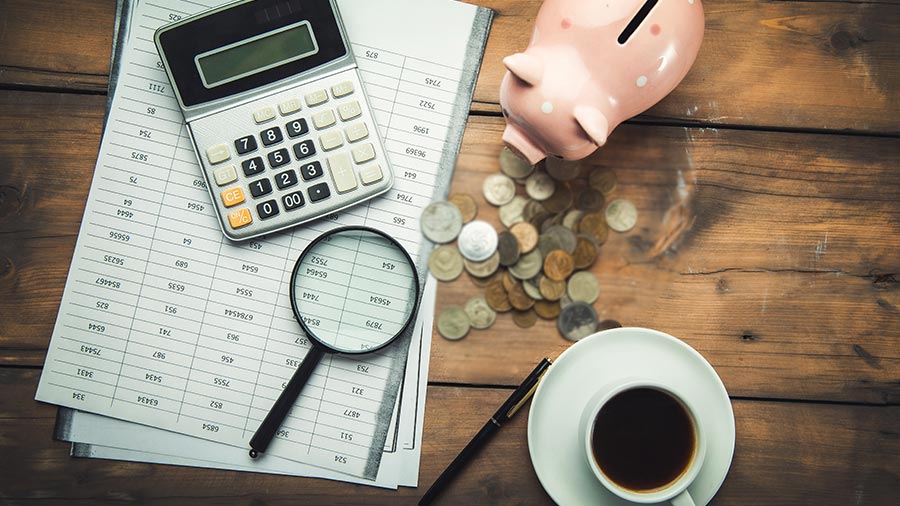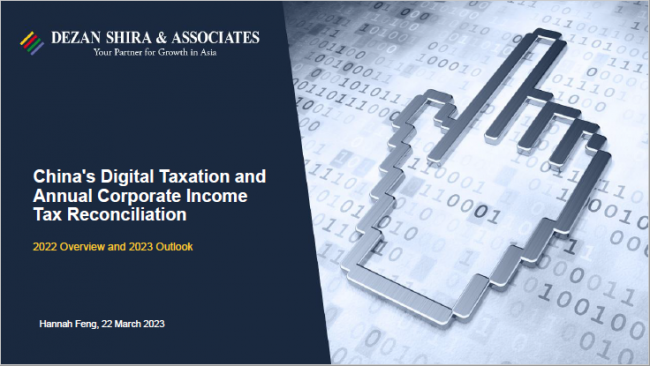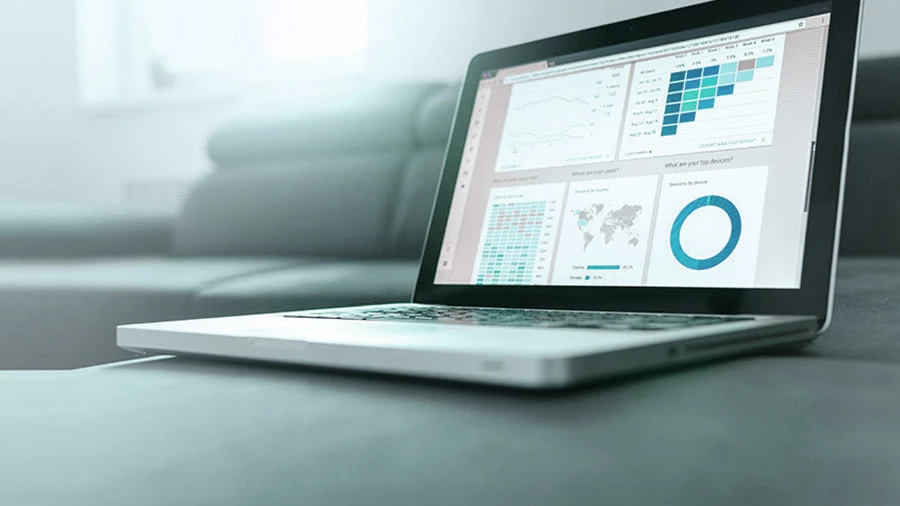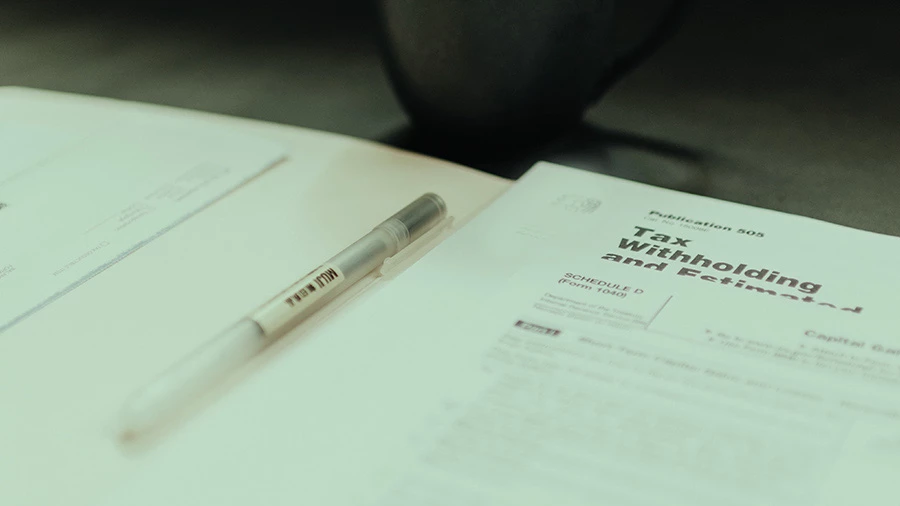Value-added tax (VAT) is one of the major indirect taxes in China. The fundamental legal framework for VAT consists of the Interim Regulation of VAT promulgated by the State Council and its Implementation Guidelines released jointly by the Ministry of Finance (MOF) and State Taxation Administration (STA).
Fundamental VAT framework in China
The current VAT system in China operates under the Interim Regulation of VAT promulgated by the State Council and its Implementation Guidelines released jointly by the Ministry of Finance (MOF) and State Taxation Administration (STA).
However, on December 25, 2024, the 13th meeting of the Standing Committee of the 14th National People's Congress officially passed the People's Republic of China Value-Added Tax Law, marking an important milestone in elevating China's VAT system from administrative regulations to national legislation
The New VAT Law will come into effect on January 1, 2026, providing businesses with a transition period to adapt to the changes. This elevation to national legislation enhances legal certainty, improves tax governance, and reinforces the principle of statutory taxation, creating a more stable and transparent tax environment—particularly beneficial for foreign enterprises operating in China.
VAT taxpayers' categories and rates
VAT taxpayers in China are currently categorized into two groups based on their annual taxable sales amount:
- General taxpayers: Entities with annual taxable sales exceeding RMB 5 million
- Small-scale taxpayers: Entities with annual taxable sales of RMB 5 million or less
Do note that taxpayers whose annual taxable sales do not exceed the prescribed standards, with sound accounting and the ability to provide accurate tax information, may register as general taxpayers with the competent tax authorities.
The term 'sound accounting' as used in these Measures refers to the ability to set up accounting books in accordance with the national unified accounting system and conduct accounting based on legal and valid vouchers
However, a significant change comes in the form of streamlining the simplified taxation levy rate structure.
Under the current system, the levy rate for the simplified taxation method exists in two tiers – 3 percent and 5 percent – with some industries subject to the higher rate. The New VAT Law appears to eliminate the 5 percent rate, reducing the simplified levy rate to a unified 3 percent. This simplification could reduce tax burdens on small businesses and specific industries, though further clarifications on transitional policies are expected in forthcoming tax documents.
Comparative analysis of taxpayer categories
The following comparison highlights the differences between VAT general taxpayers and small-scale taxpayers:
|
Aspect |
VAT General Taxpayer |
VAT Small-Scale Taxpayer |
|
Taxable income |
> RMB 5 million |
≤ RMB 5 million |
|
Rate |
0%, 6%, 9%, 13% |
1% from January 2023 to 31 December 2027 |
|
VAT payable calculation |
Output VAT - Input VAT |
Sales × VAT levy rate |
|
Advantages |
Tax-saving when profit mark-up on cost is lower than critical ratio |
Tax-saving when profit mark-up on cost is higher than critical ratio |
|
Can apply for VAT refund for export business |
Quarterly tax filing |
|
|
Can enjoy input VAT deduction |
Simpler tax calculation |
|
|
Certain VAT exemption benefits for small transactions |
||
|
Disadvantages |
Monthly tax filing |
Cannot apply for export VAT refund |
|
Must collect and verify special VAT invoices |
|
|
|
Higher tax burden when profit mark-up exceeds critical ratio |
Not tax efficient with lower profit mark-up on cost |
|
Scope of taxation
The scope of taxable transactions is those involving the sale of goods, services, intangible assets, and real estate within China. A key change is the removal of "processing, repair, and assembly services (labor services)" as a separate category, now incorporating them into general services.
The New VAT Law provides clear criteria for domestic taxation, which defines domestic taxable transactions as:
- For goods sales: If the shipment place or goods location is within China
- For real estate sales/leases or natural resource usage rights transfers: If the real estate or natural resource is within China
- For financial product sales: If the product is issued within China, or the seller is a domestic entity/individual
- For services and intangible assets sales (with exceptions): If the service/intangible asset is consumed within China, or the seller is a domestic entity/individual
Revised “deemed taxable transactions” and non-taxable items
The New VAT Law replaces the term "deemed sales" with "deemed taxable transactions" and consolidates previous rules into three main categories:
- Self-produced or processed goods used for collective welfare or personal consumption
- Transfers of goods, intangible assets, or real estate without compensation
- Transferring financial products without compensation (newly added)
Notably, the new law removes "goods consignment, sale of consigned goods, inter-branch transfers of goods, investment in goods, distribution of goods to shareholders, and deemed sale of services" from the scope of "deemed taxable transactions".
The New VAT Law also consolidates the "four non-operating activities" and the "five non-taxable items" from the current regulations into four non-taxable items:
- Services provided by employees to their employer in obtaining wages or salaries
- Administrative and institutional charges, and government funds
- Compensation received in accordance with the law for expropriation or requisition
- Interest income from deposits
VAT zero-rated transactions
The goods and services below are subject to zero percent VAT:
- Export goods;
- International transportation services if taxpayers obtain qualifications;
- Space transportation services; and
- The following cross-border services are provided to overseas entities, which are fully consumed overseas:
- R&D services;
- Energy management contracting services;
- Design services;
- Radio and television programs (works) production and distribution services;
- Software services;
- Circuit design and testing services;
- Information system services;
- Business process management services;
- Offshore service outsourcing business, including information technology outsourcing (ITO) services, technical business process outsourcing (BPO), technical knowledge process outsourcing (KPO); and
- Transfer of technology.
VAT-exempt transactions
The following cross-border services are subject to VAT exemptions:
- International transportation services are provided via the method of carriers without transportation vehicles or when taxpayers don’t obtain the required qualifications;
- Postal services, collection and delivery services, and insurance services, which are provided for exports;
- The following services and intangible assets are provided to overseas entities, which are fully consumed overseas:
- Telecommunication services;
- Intellectual property services;
- Logistics auxiliary services (except for warehousing services and collection and delivery services);
- Authentication and consultation services;
- Professional and technical services;
- Business support services;
- Advertising services where the advertisement is released overseas; and
- Intangible assets.
The following services:
- Construction services for overseas engineering projects;
- Project supervision services of overseas engineering projects;
- Engineering survey and exploration services of overseas projects and mineral resources;
- Conference and exhibition services of overseas conferences and exhibitions;
- Warehousing services where the storage venue is overseas;
- Lease of tangible movables that are used overseas;
Broadcast of radio and television programs (works) provided overseas; and
Cultural and sports services, education, medical, and travel services are provided overseas.
- Direct charges financial services provided for monetary financing between overseas enterprises and other financial transactions, and such services are unrelated to goods, intangible assets, and immovable in China.
VAT payment threshold
Individuals are exempt from VAT if their income falls below specific thresholds. Provincial tax bureaus have the authority to set these thresholds within the following ranges:
- A monthly sales amount of no more than RMB 100,000 for registered VAT payers.
- A sales amount of no more than RMB 300 or RMB 500 per transaction or per day if the individual is taxed on a transaction basis and is not a registered VAT payer.
VAT calculation and credit management
General taxpayers
The basic formula for calculating VAT payable is:
VAT PAYABLE = OUTPUT VAT IN THE CURRENT PERIOD - INPUT VAT IN THE CURRENT PERIOD
Where:
- Output VAT = Sales × VAT Rate
- Input VAT is the VAT amount paid when purchasing goods or taxable services
If the output tax for the current period is insufficient to offset the input tax of the current period, the difference can be carried forward to the next term for continued offset.
Qualified taxpayers are allowed to apply for uncredited VAT refunds in the current taxable period. The full refund of incremental VAT credit on a monthly basis is extended to micro and small firms in all industries as well as qualified enterprises in another twelve industries. Qualified enterprises will also enjoy a one-off refund of their remaining VAT credit in turn, following a timeline specified by the tax authorities.
Under new law, if the current input tax exceeds the current output tax, taxpayers may choose to carry it forward to the next period for further deduction or apply for a refund in accordance with the regulations of the State Council.
Output VAT
Output VAT refers to the VAT amount the taxpayer must calculate and collect when selling goods or providing services:
OUTPUT VAT= SALES x VAT RATE
The VAT Interim Regulations define “sales” as the total amount of prices and other outlays received from the buyer, excluding output VAT. If the original price of the product(s) already includes VAT, the sales amount excluding VAT should be:
SALES= SALES INCLUDING OUTPUT VAT / (1 + VAT RATE)
Input VAT
Input VAT is the VAT amount paid by the taxpayer when purchasing goods or taxable services.
Certain types of input VAT are eligible for deduction against output VAT, for example, the VAT amount indicated on special VAT invoices obtained from sellers, special tax payment receipts of customs import VAT obtained from the customs office, etc.
The New VAT Law expands the scope of deductible input VAT by removing the previous restriction that disallowed the deduction of VAT input on loan services. Under Article 22, only three categories of services remain explicitly non-deductible: catering services, residents' daily services, and entertainment services. Importantly, Article 22 also grants the State Council authority to specify additional non-deductible items in the future. Furthermore, to claim VAT deductions input, taxpayers must obtain valid VAT deduction certificates, with detailed requirements to be clarified through forthcoming implementation rules.
Small-scale taxpayers
For small-scale taxpayers, the formula for determining VAT payable is:
VAT = SALES x VAT LEVY RATE
SALES= SALES INCLUDING VAT / (1 + VAT LEVY RATE)
|
VAT Rates for General Taxpayers |
|
|
Taxable items |
Rate |
|
0% |
|
9% |
|
Sale and import of goods other than those listed above; processing, repairs, and replacement services |
13% |
|
Tangible property leasing services:
|
13% |
|
Transportation services:
|
9%* |
|
Postal services:
|
9%* |
|
Construction and real estate |
9% |
|
Basic telecom services |
9% |
|
Value-added telecom services |
6% |
|
Financial services:
|
6% |
|
Modern services:
|
6% |
|
Life services:
|
6% |
|
Sales of intangible assets:
|
6% |
|
*VAT rate for transfer of land use right is 9%. |
|
VAT payments
The time when the taxpayer engages in taxable behavior is when the tax obligation arises. For example:
- The VAT payment obligation arises for the sale of goods or the provision of taxable services on the date the sales amount is collected, or the proof of sales amount is obtained;
- The VAT payment obligation for imported goods occurs on the date of Customs declaration for imports; and
- The VAT withholding obligation arises on the date the VAT payment obligation occurs.
When the VAT obligation arises, it is critical to determine when the "output VAT for the period" arises. It is illegal for businesses to intentionally delay or omit recording real sales in order to delay or evade tax payments.
Due date for VAT payment
VAT payment deadlines can be set for every:
- 10 days;
- 15 days;
- 1 month; and,
- 1 quarter.
The authorized tax authorities determine a taxpayer's specific tax payment deadline based on the amount of tax payable. Taxpayers who do not frequently engage in taxable transactions may pay taxes on a transaction basis.
A taxpayer who chooses a tax payment period of one month or one quarter must file a tax return and make tax payments within 15 days of the tax payment period's expiration date.
A taxpayer who chooses a tax payment period of ten days or fifteen days should file a tax return and make tax payments within the first 15 days of the following month.
VAT fapiao
A VAT fapiao is a business voucher issued and received by all parties involved in the purchase and sale of goods or services and serves as both the legal receipt and the tax invoice.
- The fapiao is the original accounting document for a taxpayer to support the legitimacy of their activities; and,
- The fapiao stipulates the VAT due and is used by the authorities to track transactions for tax purposes and avoid tax evasion.
They are printed, distributed, and administered by the State Taxation Administration (STA) and its local branches. When a company wants to issue fapiao, they must follow these steps:
- Obtain blank sheets of specially templated fapiao paper from the local tax bureau within its quota every month;
- Print the transaction information on the fapiao sheets with a special printer that is linked to and controlled by the tax system; and
- Seal the fapiao with a dedicated fapiao seal showing the issuer’s name, tax identification code, and other necessary information.
General VAT fapiao
General VAT fapiao can be utilized by any company registered in China but cannot be used by the recipient for VAT deduction purposes.
There are two formats of general VAT fapiao – the normal general VAT invoices and the roll invoices.
The most common taxpayers for general VAT fapiao are:
- VAT small-scale taxpayers; and,
- VAT general taxpayers are not allowed to issue special VAT invoices (such as general commercial taxpayers who retail cigarettes, alcohol, food, clothing, shoes and hats, makeup, and other consumer goods).
Special VAT fapiao
Special VAT fapiao are issued by taxpayers to customers when selling commodities or providing taxable services. Special VAT fapiao can only be utilized by VAT general taxpayers. Special VAT fapiao cannot be issued for sales of tax-free commodities.
The number of fapiao that may be printed and the capital value of each individual fapiao are subject to quotas. The company’s local tax bureau determines the quotas based on the taxpayer’s actual manufacturing and/or business operation status.
These two types of fapiao have been in paper form for a long time.
E-fapiao
The paper fapiao system has remained in place for many years. However, in recent years, the methodology has come under increased strain from high-frequency transaction industries, such as retail, food and beverage, and travel. Especially with e-commerce booming in China, sellers find it difficult to issue and deliver fapiao in the traditional method due to the explosive number of online requests. Therefore, China started to explore the application of e-fapiao.
E-fapiao, as the name suggests, is a type of fapiao in electronic form, and it has the same purpose and legal effect as the conventional paper fapiao.
Despite the similar appearance of an e-fapiao and the scanned copy of a paper fapiao, the two are different in nature:
- E-fapiao is a data file that is generated in the official tax system in a structured format. It is easier for financial systems to comprehend, book, and archive automatically. And it adopts technical anti-counterfeiting measures, such as electronic signatures, to ensure its authenticity; and,
- The scanned copy of a paper fapiao just mirrors information of the corresponding paper fapiao and doesn’t contain the original anti-counterfeiting measures possessed by the paper fapiao, which are mainly physical measures, such as special printing ink, the printing font, the company fapiao chop, etc. It can’t be regarded by the tax bureau as an “original” fapiao in the way the e-fapiao can be.
E-fapiao is also divided into two types: general VAT e-fapiao and special VAT e-fapiao, but in contrast to paper fapiao, for which multiple duplicate copies are issued via the special printer, e-fapiao (whether general or special versions) only exist as a single data file.
Fully digitalized e-fapiao has finally expanded nationwide. If a company fails to produce a fapiao when requested by a customer, this constitutes an illegal act, as all business transactions are required by law to be recorded on a fapiao.
| Scope of issuers* | Selected taxpayers in all regions nationwide |
| Scope of recipients* | Taxpayers nationwide |
| The Latest Scope of Issuers and Recipients of Fully Digitalized E-fapiao | |
*Taxpayers who do not use or have the Internet are temporarily excluded from the pilot fully digitalized e-fapiao program.


























